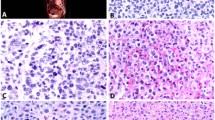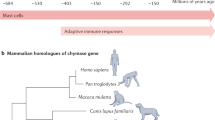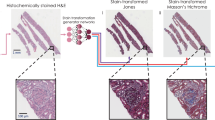Abstract
EXAMINATION of tissues stained for mast cells with a variety of accepted techniques has shown a need for a more specific staining method. The use of the conventional metachromatic dyes, though resulting in satisfactory preparations in many cases, presented problems of identification of mast cell granules in some tissues, for example, in lymph nodes where the intense nuclear orthochromatic staining of surrounding cells obscures metachromatic granules.
This is a preview of subscription content, access via your institution
Access options
Subscribe to this journal
Receive 51 print issues and online access
$199.00 per year
only $3.90 per issue
Buy this article
- Purchase on SpringerLink
- Instant access to full article PDF
Prices may be subject to local taxes which are calculated during checkout
Similar content being viewed by others
References
Barlow, R. M., J. Path. Bact., 73, 272 (1957).
Radden, B. G., submitted to J. Histochem. Cytochem.
Radden, B. G., thesis accepted by the University of London for the degree of Ph.D. (1959).
Pearse, A. G.E., “Histochemistry. Theoretical and Applied”, 1st ed. (Little Brown and Co., Boston, 1953).
Author information
Authors and Affiliations
Rights and permissions
About this article
Cite this article
RADDEN, B. A Specific Stain for Mast Cell Granules. Nature 186, 400–402 (1960). https://doi.org/10.1038/186400a0
Issue date:
DOI: https://doi.org/10.1038/186400a0



